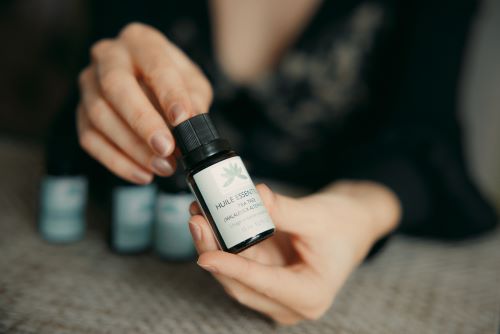Prior to getting involved into aromatherapy professionally, I always had 3 essential oils in my home medicine cabinet: lavender, eucalyptus and tea tree. I’ve been mentioning the former two oils in my posts quite often (here’s an example), so today I’d like to introduce you to the tea tree essential oil (Melaleuca alternifolia).
In fact, tea tree essential oil has nothing to do with actual “tea”. It is made from the leaves of an evergreen shrub that grows mainly in Australia. The tree got its name from the fact that the local natives brewed the leaves of the tree for medicinal purposes, and the resulting infusion was very similar to tea. The world learned about the tea tree back in the 18th century thanks to an expedition to Australia by James Cook, who tasted and appreciated its wonderful qualities.
It is difficult to fit all the beneficial properties of this essential oil into one post; entire books have been written about them. Below are some of the common ones:
– It posses the strongest antiviral, antimicrobial and antibacterial properties of all known essential oils, therefore it is often called the “antiseptic of modern times”;
– It is used for any infections, including respiratory, skin, urinary-genital, ear, oral cavity, etc.;
– It disinfects and soothes the skin after insect bites and burns (be careful to dilute before applying to skin);
– It has a strengthening effect on the nervous system: recommended to ease depression, hysteria, shock conditions.
Here is how can you use this oil at home:
- diffuse into the air by means of an ultrasonic diffuser, especially if someone in the household has symptoms of a cold. The smell of tea tree oil is quite penetrating and overpowering, but pleasant for many. I wouldn’t mix it in a diffuser with other oils for it is strong and effective on its own;
- use to treat small wounds, infections and insect bites: depending on the wound location, add 1-2 drops of tea tree and lavender essential oils to a piece of cotton and apply to the wound / bite, or hold the affected area in warm water with the addition of a couple of drops of tea tree oil (shake the water well so that the oil is evenly distributed);
- for ear pain: add a couple of drops of tea tree oil to 1 teaspoon of olive oil, moisten a piece of cotton in the blend, wring out and gently put in the ear canal. This method is suitable for both adults and children from 5 years old;
- in household detergents: tea tree is an excellent means for fighting and preventing mold. Mix equal parts vinegar and water in a spray bottle, add 10-15 drops of tea tree oil (depending on the volume), shake well and treat the surface prone to mold (usually window frames, tile joints in the bathroom and other areas of high humidity).
As mentioned before, these are just a few ways to use this wonderful essential oil, some of which you have (hopefully) already tried and appreciated.
